- What is MVP minimum viable product?
- 10 characteristics of MVP:
- 10 advantages of MVP:
- Myth busted: What really is MVP minimum viable product and what is not?
- How to build MVP: 5 step MVP development process
- MVP vs MDP: when to choose which?
- Success example of Amazon, and Twitter MVPs
- To wrap up: what is MVP minimum viable product?
- FAQ
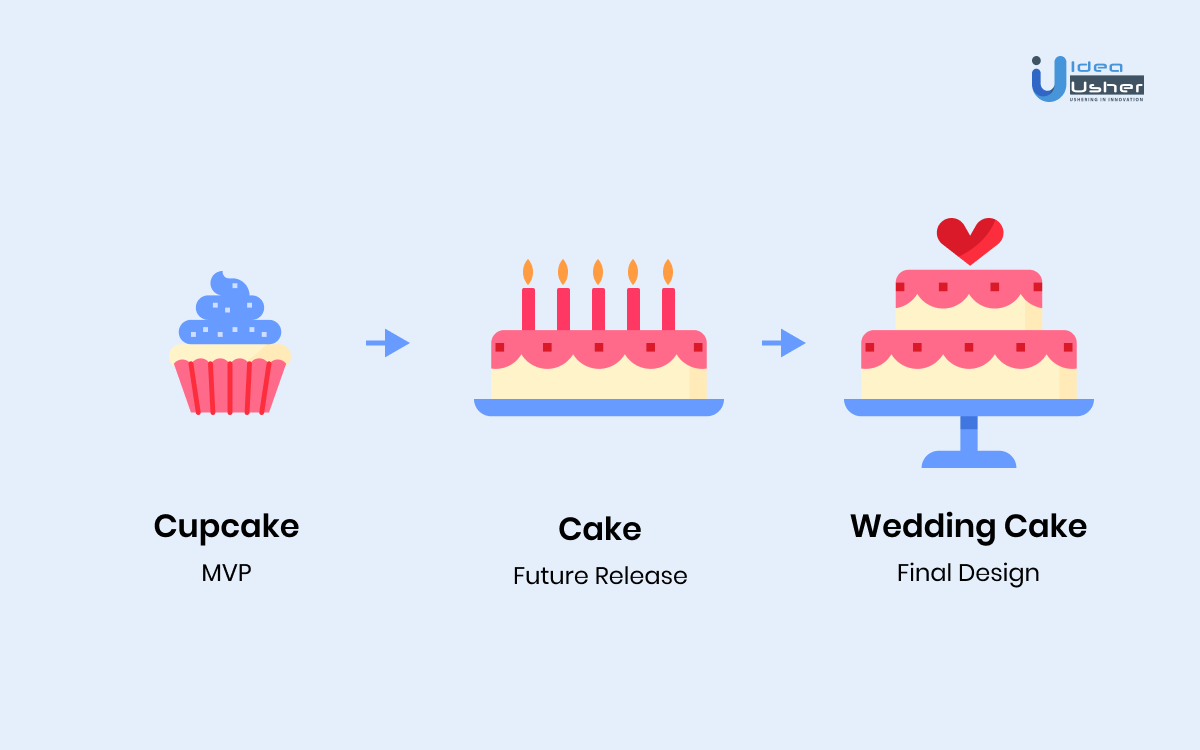
“What is MVP minimum viable product?”
“Should I choose MVP or MDP?”
If you’re looking for answers to these questions, you’re on the right page. Idea Usher app development experts are here to guide you.
What is MVP minimum viable product, you ask? Actually, MVP is a specific type of product development process. In this article, we want to talk about the top features of the MVP for you to understand how it can help you realize your potential app idea.
At a certain point, your business idea will begin to make money.
Now, this is when many startups panic and lose focus. Things can now get complicated, and the cost of failure will increase. Time is also running out for you or your team to learn from experiences and become experts in your industry. This is why continuous improvement in support is so important. Therefore, an easy route to minimize risk would be to opt for the MVP strategy.
- What is MVP minimum viable product?
- 10 characteristics of MVP:
- 10 advantages of MVP:
- Myth busted: What really is MVP minimum viable product and what is not?
- How to build MVP: 5 step MVP development process
- MVP vs MDP: when to choose which?
- Success example of Amazon, and Twitter MVPs
- To wrap up: what is MVP minimum viable product?
- FAQ
What is MVP minimum viable product?
The basics are simple: it is a version of a new product (software, mobile app) in its early stages. This product often has just enough features to satisfy early adopters. MVP is a specific type of product development process. Let’s learn in detail about this process.
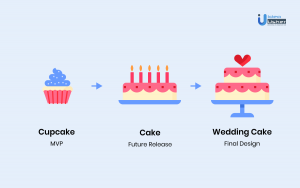
What is the purpose of MVP?
You start with a product and not a project or some skill. It means you should develop a product with only the basic functionality, but it must have the most important features for your users.
10 characteristics of MVP:
Before coming up with a Minimum Viable Product, you need to plan how your product is going to work and what you want it to accomplish. Also, it will make it easier for you and the team that will be working with you to conceptualize and produce it.
There are various characteristics of MVP and all of them should have in common that the product is designed specifically for testing or learning about a hypothesis related to the core business problem. Share on X- It is innovative, and customers have not seen it or used it before
- It is targeted towards few selected markets
- The product needs to have one key benefit and be problem-solving
- Have no frills, bells, or whistles
- Be viable for users to test it out (cost-effective)
- It can be more than one function
- It is used to test the main product idea, and development revolves around it
- MVP is a mere skeleton of your final product
- MVP is a part of your core value proposition
- Ultimately, MVP is based on research and validated learning
10 advantages of MVP:
One of the biggest advantages when you’ll try to understand what is MVP minimum viable product is:
You are stripping down the number of features to build the product quicker and get your product out in the market for fast customer feedback.
Simply put, instead of planning everything in your mind, you can now test with real users and see what works and what doesn’t work.
- Low-cost marketing
- Build a prototype fast
- Find your early adopters (target users feedback who are your small group of fans)
- Learn fast, reduce risk
- MVPs are low cost
- Focus and make better decisions
- It saves time and money
- MVP makes product planning easier
- MVP works well with agile development
- It can be used as a baseline for future applications
Myth busted: What really is MVP minimum viable product and what is not?
MVP is a particular category of products. Such a product is developed to test one or several hypotheses related to the product’s positioning on the market by identifying its key features and making an effort to determine whether these features will be valuable to the customer.
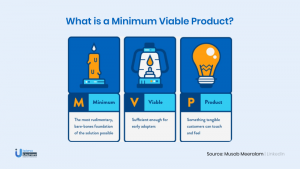
- Minimum viable product is not a completed product. It is a process.
- MVP is not just an idea, and you’re going to the execution stages too
- MVP is not a prototype or mockup, but it could be a prototype or mockup
- You can’t be sure that your product will be a success before you launch it to the market
- MVP is not just for startups but also established businesses that are looking for “growth.”
No algorithm or testbed can accurately predict the preferences of customers for specific product configurations. The requirements for custom products are primarily determined by the functions of materials (including physical characteristics). Furthermore, it is a basic answer to the question “what is MVP minimum viable product”. And these characteristics are not predictable from existing technology with sufficient accuracy.
How to build MVP: 5 step MVP development process
There are thousands of articles on the internet which talk more about the “How to build MVP” process. What is MVP minimum viable product, you ask? Now in this article, I am going to present my 5 step MVP development process. (Because nobody has the time to go through 1000s of articles and find a needle in the haystack).
| Stage | About | Duration | Description |
| 1 | Scoping and create a hypothesis | (1-2 weeks) | Scoping is to list out all the features your MVP will have. It’s the first step in the product development process. It helps you decide what features are crucial for the MVP and can be left for later releases. Your scoping list should be a living document that is updated frequently as you learn more about your customers. |
| 2 | Prototyping | (1-2 weeks) | Prototyping helps speed up a software development process and is sometimes even preferred over creating an actual plan. This is the step where developers create mock-ups of the application. For example, the front page of a website, the search box, and other important areas of a page that users interact with often. The idea is to test the design with real people so that you get objective feedback and make improvements based on real-life user experience. |
| 3 | Start building MVP with feature-list and structure | (2-6 weeks) | The development process is pretty straightforward: come up with the simplest, fastest, and cheapest way to implement the user stories. |
| 4 | Review | (1 week) | Once you have completed the first steps of your MVP Development process, you should be able to review your product and reactions gathered from actual users. By this stage, you should be aware of how to easily find people willing to help you properly test your product. And you must do it as soon as possible. |
| 5 | Support (ongoing activities) | (Ongoing activities) | Support and maintenance services of high quality are a guarantee for the success of your product. The advice of experts in development or simply their help will save you much time and money, not to mention a couple of gray hairs. |
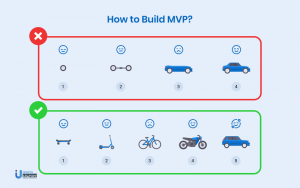
Note: In MVP development, you will face multiple challenges regarding support and maintenance.
The challenge lies in maintaining the app constantly without a tangible reward. This is because the value of your app may not be apparent until further time has passed. Since the client views the project as Beta, your role gradually becomes a product manager rather than a developer. “The answer is directly tied to what is MVP minimum viable product”? Continue reading to learn why.
Most startups go through this principle of MVP (minimum viable product) before building a complete-fledged application to validate their idea. And if you are working on an app yourself, MVP development is the most critical phase, and Idea Usher will try to help you with that.
MVP vs MDP: when to choose which?
Let’s be real here. It’s easy to confuse the two. In fact, you may have already done so without realizing it. And one is superior to the other (by now, you know which one).
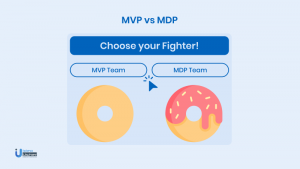
If you search online “what is MVP minimum viable product”; you might have come across this term MDP too. Let’s briefly understand what it is.
MVP (Minimum Visible/ Viable Product)
It is the most basic form of the product that you can show. An MVP is enough for customers to see what’s going on in your product.
‘the ideal solution – fulfills all the needs.’
Use this for an evaluation of the product and the ability to get feedback from the market.
MDP (Minimum Delightful Product)
The least amount of features that are required to delight users and make them want to use your product.
Use this for when you have an actual product ready for sale.
Success example of Amazon, and Twitter MVPs
Amazon MVP
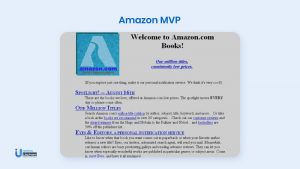
Here’s how they did it. They started with a very cheap website build. Further, they made products available internationally.
| Amazon has a standard business rule: always kept the cost low and profit high |
- Find a niche – Amazon started as an online store for books
- Find a need – Listen to customer feedback and come up with solutions
- Make an MVP – Create the first version of your product and test it with your customers
Twitter MVP
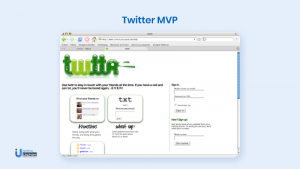
How Twitter started saved them money and became a success. Their mantra on “how Twitter changed the world” was thinking about “how you (user) can use this for your business.
Their first feature: “what’s happening”?
This helps your reader get a quick idea of what is going on. They can read up on these events without having to search the web. Furthermore, users can choose to go into depth later. Ultimately, this approach is great for new tech, politics, and news in general.
- They had a great idea
- It’s handy to build a product around it
- They presented the product in a fun way
To wrap up: what is MVP minimum viable product?
- Build a prototype of the product
- Get feedback
- Keep iterating
If you are looking to develop an MVP and launch it on a shoestring budget, quickly and without much fanfare; here’s the deal. We can help. Write to us at [email protected] or click on the image below:
FAQ
Q. What is MVP minimum viable product?
A. It is a test product, with just enough features to solve a problem. It doesn’t have add-on features in its first version.
Q. What makes an MVP different from a prototype?
A. An MVP is a product produced that promotes the core value of an idea in its simplest form. This maintains a lean startup approach and helps to reduce risk when moving forward. In addition it, it allows you to validate your idea and move it towards a product that customers want to buy. In contrast, a prototype demonstrates the use of a product without any form of feedback or testing.
Q. How much time does MVP development take?
A. Most likely, it’s going to consume almost 90% of your time on this project. That is the price for building a product others didn’t have before. So, the code going live is just 10% of the work. Cumulatively it stands around 10-12 weeks. So if you plan to launch in 3 months, there are still 10 more weeks to go! Don’t die before that happens ;).
Q. Is MVP development affordable?
A. Perhaps the most important question of them all is whether MVP development is affordable. In short, it is indeed. As I’ve mentioned, we’ll only be taking a small slice of the project’s features when developing an MVP. You’ll be getting an app that does its work well, serves the purpose you need, and can help you garner valuable customer feedback. If you want an economical quote, reach us at [email protected].
Q. Which companies started with an MVP?
A. Very cool companies like Twitter, Amazon, Airbnb, Buffer, Product Hunt, Trello, Screenhero, Getaround, etc., started with an MVP. These are considered the best examples to explain when someone asks “what is MVP minimum viable product?”








